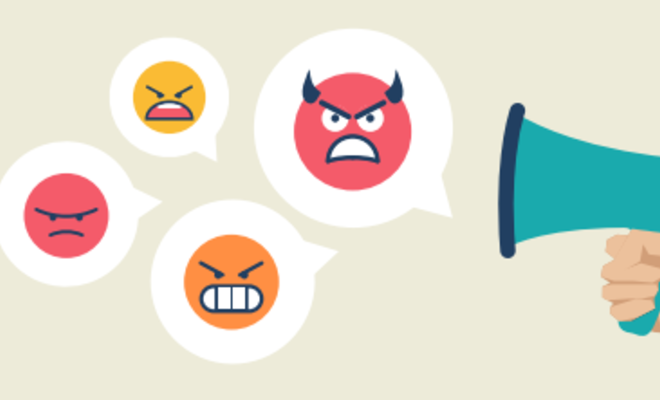Seventh evaluation of the Code of Conduct

The seventh evaluation on the Code of Conduct on Countering Illegal Hate Speech Online shows that the number of notifications reviewed within 24 hours (64.4%) has decreased as compared to 2021 (81%) and 2020 (90.4%). Only TikTok has increased its performance (from 82.5% to 91.7%). The average removal rate (63.6%) is similar to 2021 (62.5%), but still lower than in 2020 (71%). Looking at the individual performance of the platforms, most of them (except for YouTube) have removed less hate speech content than in 2021. The quality of feedback to users’ notifications has improved as compared to previous monitoring exercises.
Key figures
Notifications of illegal hate speech
- 36 organisations from 21 Member States sent notifications to the IT companies taking part in the Code of Conduct regarding hate speech deemed illegal during the period 28 March to 13 May 2022.
- A total of 3634 notifications were submitted to the IT companies part of the Code of Conduct.
- 2765 notifications were submitted through the reporting channels available to general users, while 869 were submitted through specific channels available only to trusted flaggers/reporters.
- Facebook received the largest amount of notifications (1558), followed by Twitter (1097), YouTube (423), Instagram (398), TikTok (151) and Jeuxvideo.com (7).2 Snapchat, Dailymotion and Microsoft did not receive any notification in the course of the monitoring exercise. LinkedIn, which joined the Code in 2021, will be monitored from the 2023 monitoring exercise.
- In addition to flagging the content to IT companies, the organisations taking part in the monitoring exercise sent 176 cases of hate speech to the police, public prosecutor’s bodies or other national authorities.
Time of assessment of notifications
- In 64.4% of the cases, the IT companies assessed the notifications in less than 24 hours, an additional 12.7% in less than 48 hours, 21.5% in less than a week and in 1.4% of cases, it took more than a week.
- The Code of conduct prescribes that the majority of notifications is assessed within 24 hours. All IT companies are therefore on target, yet, the average results are lower than in 2021 and 2020 (81% and 90.4%, respectively).
TikTok assessed notifications in less than 24 hours in 91.7% of the cases and an additional 3.8% in less than 48 hours. The corresponding figures for YouTube are 83.3% and 7% and for Twitter 54.3% and 28.9%, respectively. Instagram had 56.9% and 5.9%, and Facebook 63.8% and 8.2%. Only TikTok had a better performance than in 2021, while all other platforms had a worse score than last year.
Removal rates
- Overall, IT companies removed 63.6% of the content notified to them, while 36.4% remained online. This result is slightly higher than the average of 62.5% recorded in 2021, but lower than the peak score of 71% in 2020.
- The results by IT company show that only YouTube had a better score than last year, while all the other platforms had a lower removal rate than in 2021.
- Removal rates varied depending on the severity of hateful content. On average, 69.6% of content calling for murder or violence against specific groups was removed, while content using defamatory words or pictures to name certain groups, was removed in 59.1% of the cases.
- The divergence in removal rates between content reported using trusted reporting channels as compared to channels available to all users was 25.4 percentage points, much higher than the 13.5 percentage points observed in 2021. This seems to suggest that there is a growing difference of treatment between the notifications from general users and those sent through special channels for “trusted flaggers”.
- IT companies were invited to make a self-assessment on the results of the exercise. Some of them reported cases in which they disagreed with the notifying organisations, i.e. where according to their assessment the content notified was not in violation of terms of services and/or local laws. For example, Facebook reported to disagree on 15.5% of cases flagged to them and Instagram on 16.4%. These percentages are slightly higher than in 2021, when Facebook had disagreement in 12% and Instagram in 11.9% of the cases. YouTube disagreed on 3% of the cases. This shows the complexity of making assessments on hate speech content and calls for enhanced exchanges among trusted flaggers, civil society organisations and the content moderation teams in the IT companies.
YouTube removed 90.4% of the content flagged, Facebook 69.1%, TikTok 60.2%, Instagram 58.4% and Twitter 45.4%. Except for YouTube, all the other platforms had a lower removal rate than in 2021, although often with minor variations (for example, Facebook removed 70.2% of content in 2021 and Twitter 49.8%).
Feedback to users and transparency
- On average, the IT companies provided feedback to 66.4% of the notifications received. This is higher than in the previous monitoring exercise (60.3%).
- The Digital Service Act, which entered into force on 16 November 2022, highlights the need for of clearer ‘notice-and-action’ procedures, including transparency and feedback to users’ notifications.
Facebook remains the platform that informs users most systematically (84.9% of notifications received feedback, similar to the 86.9% of 2021). TikTok and Instagram have improved their feedback to users, with 74.8% and 72.6% (28.7% and 41.9% in 2021, respectively). Twitter gave feedback to 57.1% of the notifications (slightly higher than the 54.1% of 2021) and YouTube to 13.5% (7.3% in 2021). All platforms respond more frequently to notifications sent from the trusted flagger channels.
Grounds for reporting hatred
- In this monitoring exercise, anti-gypsyism, xenophobia (including anti-migrant hatred) and sexual orientation are the most commonly reported ground of hate speech.
- The data on grounds of hatred are only an indication and are influenced by the number of notifications sent by each organisation, as well as their field of work.



